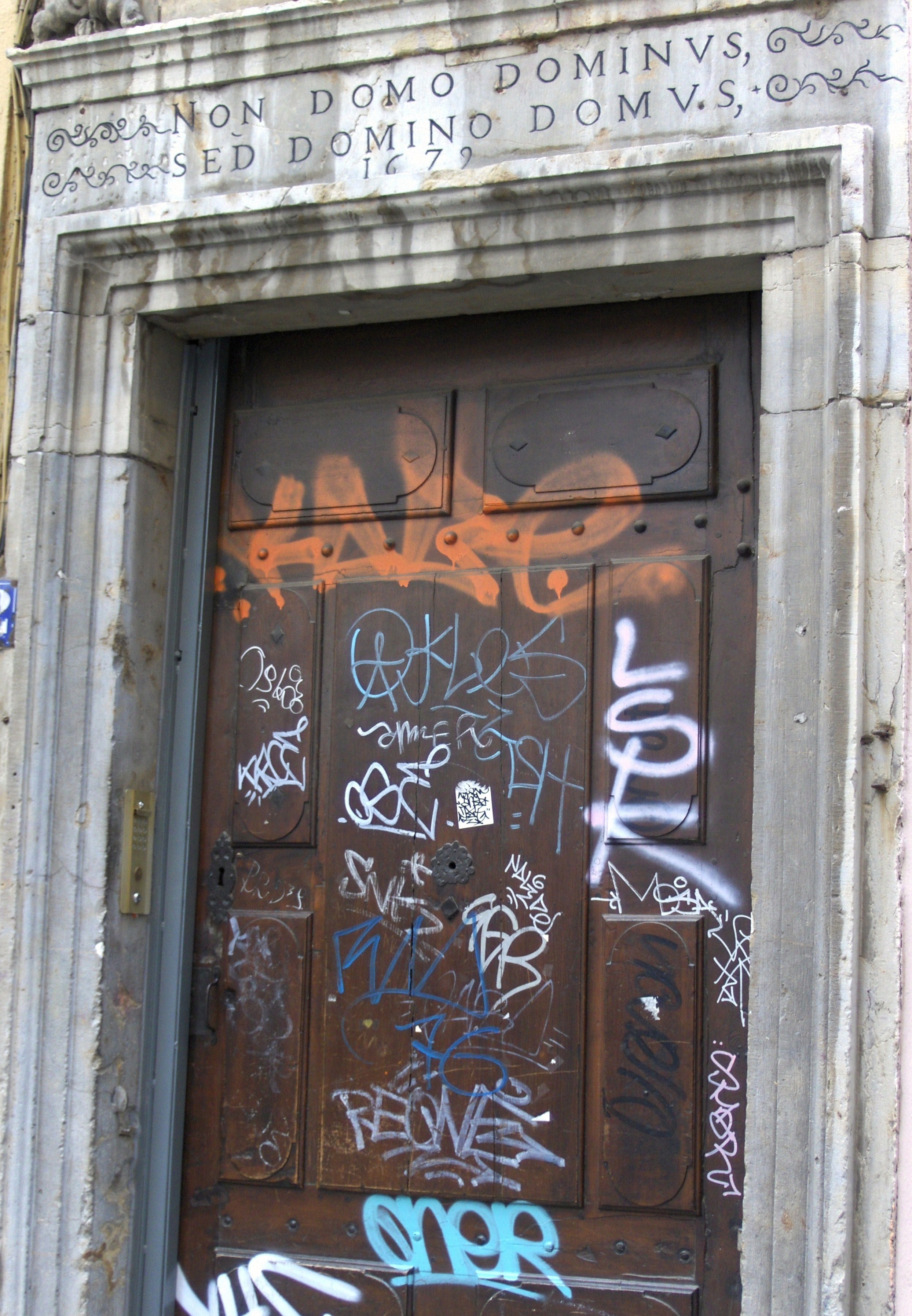I came across this doorway in a quiet back street of Lyon last summer. The words engraved above the date on the stone door frame are taken from Cicero:
‘The truth is, a man’s dignity may be enhanced by the house he lives in, but not wholly secured by it; the owner should bring honour to his house, not the house to its owner’
(De Officiis, 1.138-9, Walter Miller’s Loeb translation).
A man’s honourable character makes his house truly dignified, not the other way round. Engraved above the entrance to a building, this proverbial message is literally embedded in the matter and material about which it speaks.
This photograph presents us with a more elaborate material text, however. Cicero’s moralising words about the relationship between a man and his house, engraved by a seventeenth-century stonemason, are juxtaposed with the spray-can marks of contemporary graffiti. The multicoloured graffiti tags covering the door contrast with the delicate swirl motifs which ornament the letters in the stone above. The wooden door has become a public writing surface which invites the addition of more and more text, the presence of which, convention decrees, is an unauthorized defacement of the door, a dishonouring of private property.
As Juliet Fleming reminds in her landmark volume on early modern graffiti, the media with which graffiti are created usually means that their long-term survival is unlikely. Unlike the engraved motto on this door, which has so far survived for over three hundred years (and whose literary origin takes us back over two thousand years) the graffiti here are temporary, fleeting, and we can see where they have faded or been scrubbed away.
Fleming also reminds us it is ‘the visible placement of modern graffiti that constitutes its scandal as a form of writing that, exceptionally, is understood to be filling space’ (Graffiti and the Writing Arts of Early Modern England, pp. 33-4). We may not ‘read’ this modern graffiti in the same way that we read the seventeenth-century motto here, but this striking juxtaposition of distinctively early modern and modern forms of text in a very public space illustrates the different moral and aesthetic questions raised as writing negotiates its place in the material around us.
